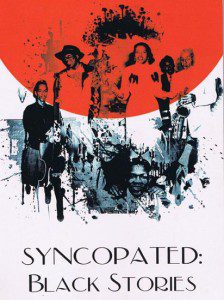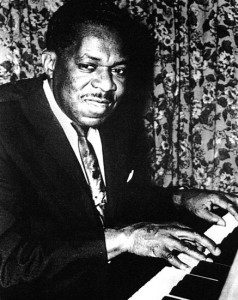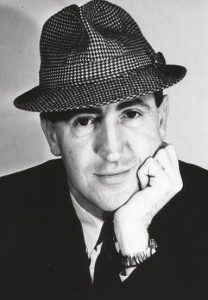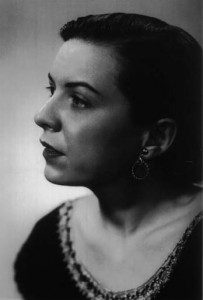
The star attraction was not in the house that night. While many others – the luminaries of the Canadian jazz scene – performed on stage, perhaps the country’s best studio and jazz concert drummer of the day was absent. In fact, it was because he was absent, that all the stars came out. It was in 1967 when Toronto-born musician Archie Alleyne suffered serious injuries in a car accident. He was not able to work … at either of his jobs.
“I didn’t have a car, so I had to carry my drum kit on streetcars and the subway,” he told my father, Alex Barris, back then. “I’d play from 9 at night to 1 a.m., get home with my drums by 3 a.m. and be up four hours later to go to my day job.”
At any rate, as I say, back in ’67 the jazz stars came out to shine at a downtown Toronto club, the Town Tavern, in a fundraiser for Archie Alleyne. The evening’s benefit attracted a who’s who of jazz – performers such as Oscar Peterson, Peter Appleyard, Rob McConnell, Guido Basso, Ed Bickert, Norm Amadio, Arnie Chycoski and singers such as Don Francks. They all played and sang for nothing that night to help one of their own when he most needed moral support and money to pay his bills. I know this, because I was there. Underage, but I was there.
You see, since my father regularly covered jazz acts at the Town Tavern and other venues for the Toronto newspapers, the club owner allowed Alex’s 18-year-old son to sit in the shadows at the back of the tavern to hear the crème de la crème of Canadian jazz. I never forgot it. Neither, it seems, did Archie Alleyne. In 2011, the then 78-year-old legend hosted a show called “Syncopation: Life in the Key of Black” at the Al Green Theatre in Toronto. It was his seventh annual fundraising concert to provide 17 scholarships to up-and-coming jazz musicians in Toronto.
“Support of young musicians,” Archie commented on the stage that evening, “will have a positive impact on the future of live jazz music in this country.”
Of course, just about any jazz musician will readily show up if there’s a musical gap to fill – subbing at a studio session, doubling during a concert, or joining an impromptu jam – when opportunity knocks. But when the need is more than musical, jazz artists north of the 49th Parallel have traditionally gone above and beyond. In addition to giving me an education in jazz by sneaking me underage into clubs around Toronto, my father Alex Barris often regaled me with tales of jazz performers – particularly artists unknown to the general public, but as talented as any in the limelight.

Dad’s recounting of Cy McLean breaking the colour barrier in Toronto, for example, has stayed with me. In the 1930s, the pianist originally from Sydney, Nova Scotia, brought his swing band to Toronto, where the then president of the Toronto Musicians’ Protective Association refused to allow black musicians to join. To fill in the gaps between gigs, McLean worked as a courier for Imperial Oil. Then for a period of three years, beginning in 1944, the Cy McLean Band began regular shows at Toronto’s Club Top Hat, whose management finally forced the TMPA to allow black musicians entry to Local 149 of the American Federation of Musicians.

McLean’s acceptance in the musicians’ union proved all the more significant, because in Toronto there were writers such as my father and others eager to document and applaud it. About the time my father got the green light for his own entertainment column, “The Record Album,” (later “The Barris Beat”) at the Globe and Mail, fellow jazz journalist, Helen McNamara launched her first music column, “McNamara’s Bandwagon,” at the Toronto Telegram. Although they wrote for rival newspapers, Alex and Helen became fast friends. They covered jazz acts together. They interviewed some of the same U.S. stars who came through town. They even co-hosted a weekly jazz disc show – first on CFRB Radio, then on the CBC Radio network.
Above all, the two of them went out of their way to showcase Canadian musicians and Canadian singers, often men and women of African-Canadian background, when it wasn’t fashionable. They gave singers such as Phyllis Marshall, Eleanor Collins, Ranee Lee, Jackie Richardson, Almeta Speaks and Rudi Webb, as well as musicians such as Oscar Peterson, Oliver Jones, Wray Downes, Sonny Greenwich, Joe Sealy, Archie Alleyne, Russ Little and Frank Wright ink and air time when nobody else cared.

They helped put them centre-stage when stages were few and far between. They helped provide an audience when “Canadian jazz” and “notoriety” rarely appeared in the same sentence. They gave members of their community a chance to be noticed, enjoyed and celebrated. Ironically, in the late 1990s, when Helen McNamara became hospitalized and faced skyrocketing hospital expenses, Alex approached many of those same musicians for help. Everyone in the Toronto jazz community – black and white – agreed to perform a benefit concert to help Helen get through a tough time. My father emceed the fundraiser that night.
“Nothing I have ever been involved with,” Alex wrote later, “has given me as much satisfaction or feeling of accomplishment, as that night.”
From that tradition of caring has come a legacy of sharing. The same way my father and Helen McNamara felt a calling to research and document the stories of jazz musicians of their day, so has Archie Alleyne felt compelled to record and publish the stories of jazz as he witnessed them. Ever since he initiated his own live showcase of musicians and singers, called “The Evolution of Jazz,” back in 1991, Archie has given his musical art form something Toronto and Canada has never had – an archive.
“Jazz,” he told my father, “is black classical music” and needs to be preserved. Further, Archie Alleyne likes to remind us “without the past, there is no future.”
A compilation of some of that past here provides a permanent reminder that Canada’s jazz scene owes a great deal to the character and artistry of its individual performers, but also to the very Canadian tradition of being connected, supportive and responsible for each other on and off the stage.